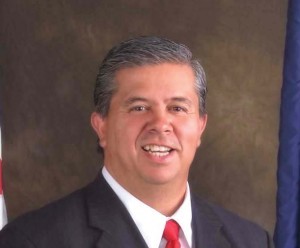State Superintendent Tom Luna handed out $271,000 in staff bonuses this year — calling it an effort to retain senior staff and continue an ongoing department rewards program.
The bonuses came from salary savings, and are not unique to Luna’s State Department of Education. For several years, legislators have encouraged elected officials and state agency heads to use salary savings to reward and retain employees.
The Education Department bonuses fall into two categories.

For the last three years, Luna has awarded leadership bonuses to up to one third of his staff, rewarding employees for achieving key benchmarks or doing work that went above and beyond required duties. This cost the department about $120,000 per year.
This year, Luna paid out another $151,000 in bonuses to 22 State Department of Education directors, to retain senior staff during the final year of his term.
“We wanted to incentivize people to stay,” said Luna, who announced in January that he would not seek reelection after eight years in office. “We decided we wanted to focus on making sure that this last year in office we maintained a staff that meets all the demands.”
The 22 directors received bonuses of up to $9998.40. Many of the recipients — such as Luci WIllits, Luna’s chief of staff — remain with the department. But at least four of the recipients — such as Jason Hancock, Luna’s deputy chief of staff — have since left the department.
Luna said the money to fund these additional bonuses came from salary savings. Four deputies quit and those high-paying positions were not replaced. Instead, directors were asked to absorb deputy responsibilities.
“It’s pay so they stay and take on more work,” Luna said. “I think my plan worked because we only lost four of 22 directors.”
Willits said the prospect of losing directors during Luna’s last months in office was “frightening.”
“We still have statutory responsibilities,” she said. “These people have institutional knowledge. Plus, we can’t find people who want to work here with the uncertainty.”
Idaho’s next superintendent — either Republican Sherri Ybarra or Democrat Jana Jones — will take over the department after November’s election. She will have the authority and responsibility of hiring her own staff.
Luna said the bonuses were paid from the 2013-14 budget, a budget year ending June 30. He also said the next superintendent will have nearly $300,000 in salary savings from this year’s budget to start their term.
“We’ve left positions open and that gives the new superintendent a lot of flexibility,” Luna said. “I want this to be a very smooth transition.”
Republican Rep. Maxine Bell, co-chair of the Legislature’s Joint Finance-Appropriations Committee, applauded Luna’s bonus program.
“I commend him for being concerned and forward-thinking,” she said. “He’s a constitutional officer and it’s his budget.”
Sen. Dan Schmidt, a Moscow Democrat and JFAC member, did not criticize Luna. But he did criticize the overall practice of siphoning salary savings into bonuses, saying it throws the state employee salary system out of whack.
“It has amplified the problem of underfunding state employees,” he said. “We’ve given (administrators) that tool, and I think that’s a policy that needs to be looked at.”
Not every administrator has used this tool.
Like Luna, Secretary of State Ben Ysursa is stepping down at the end of his current term. Ysursa did not choose to hand out retention bonuses to his staff. His staff is smaller — 28 full-time employees, compared to the Education Department’s staff of about 140 — and the secretary of state’s staff serves more of an administrative role while the education department has more professional positions.
“I would think it’s apples and oranges trying to compare us,” Ysursa said. “We perform different work here.”
Luna started giving out leadership bonuses at the same time the state appropriated bonuses for Idaho educators. About $70 million have been appropriated over the last three years, and teachers had the opportunity to earn up to $5,400, depending on how districts wanted to divvy up their dollars.
The Education Department created a matrix for earning bonuses that includes benchmarks and student achievement measures.
“I can’t emphasize enough we wouldn’t expect districts to do something we wouldn’t do ourselves,” Luna said. “One difference is that the Legislature appropriates funding for teacher bonuses and we use savings from the department we were able to accrue from salaries.
“I’ve always been in favor of bonuses and we’re done that same thing here — recognize exceptional work,” Luna said.
